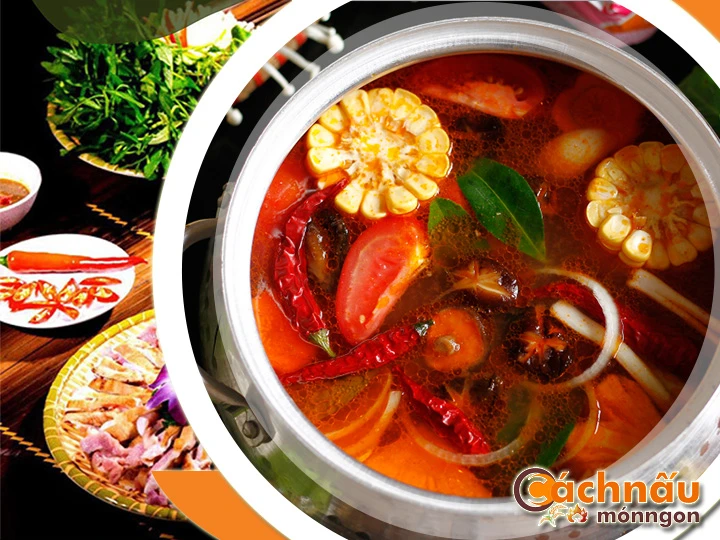Enjoy the Authentic Rabbit Hot Pot Guide You Must Try - Lẩu thỏ
Rabbit hot pot, a yummy and culturally significant meal, has been revered across different food cultures for centuries.This comprehensive guide explores every detail you need to understand about rabbit hot pot, from its historical background to current adaptations, nutritional benefits, and step-by-step instructions for creating the ideal dish at home. Whether you are a professional cook or a amateur chef, this guide will inspire and equip you to master the art of rabbit hot pot.

LEARNING ABOUT THE LEGACY IN ADDITION TO CULTURAL ASPECTS RELATED TO RABBIT CUISINE.
Rabbit hot pot acts as a special and time-honored dish with deep heritage in different parts of the world. Its admiration stems not only from its rich flavor but also from its past and cultural importance.
1. Exploring the Beginnings centered around Stewed rabbit.
- The Origins: Braised bunny dish began in small towns where rabbits were a popular, wholesome food source. In ancient China, it was a traditional treat, particularly during celebrations.
- Adopted in Various Places: In Western regions like France, rabbit was historically prepared in broths, adapting into modern versions of hot pot as the dish rose in worldwide popularity.
2. Traditional Rabbit Cuisine integral to Eastern Culinary Practices.
- In China: Known as China’s beloved rabbit hot pot, rabbit hot pot is widely known in the culinary traditions of Sichuan, famous for its pungent flavors and cherished at festive occasions.
- Korea and Japan: While less frequent, rabbit hot pot is sporadically cooked as a herbal dish in Korea, or borrowing ideas from traditional nabemono dishes in Japan, incorporating local garden vegetables and seasonings.
- Throughout Vietnam: Although rabbit hot pot is uncommon in everyday meals, it is celebrated during important celebrations or in remote locations where rabbit meat is plentiful. It is often enhanced by distinctive spices such as aromatic lemongrass, zesty ginger, and spicy chili, paired with fresh vegetables like river spinach, brassica leaves, or mimosa vegetables. This dish is favored for its distinct taste and wholesome qualities, frequently shared at special moments with close ones.
Tại Việt Nam, tuy không tính là món ăn thịnh hành từng ngày, nhưng nổi bật trong các dịp đặc biệt hoặc ở những miền quê, nơi nguồn thịt thỏ phong phú. Thường được nấu cùng các loại gia vị như sả, vị cay từ gừng, và vị cay nồng của ớt, kết hợp với rau muống. Món ăn này được yêu thích nhờ sự đặc sắc trong hương vị và tính bổ dưỡng, thường được thưởng thức tại.
3. Rabbit Casserole in Western Food Culture.
- Throughout France: Typically cooked as a rich stew with wine reduction, herbs like rosemary, and vegetables like carrots and potatoes. Rabbit hot pot is a time-honored dish for festive feasts.
- Within Italy: The dish called “Cacciatore”, featuring rabbit braised in tomatoes and wine, is a culinary root of modern rabbit hot pots.
HOW TO COOK RABBIT HOT POT: RECIPES AND TECHNIQUES
Rabbit hot pot is a versatile dish that combines seasonal ingredients, savory broths, and specialized methods to create a hearty and delicious feast. Below are detailed insights into the core recipes and strategies to perfect rabbit hot pot.
The Fundamental Recipe for Rabbit Hot Pot
* Required Ingredients:
- 1 whole rabbit (cut into pieces)
- 4 cups of broth (chicken)
- Vegetables (bok choy)
- Spices món lẩu thỏ and herbs (thyme)
- Seasonings (salt)
- Optional: side dishes for serving
* Cooking Instructions:
- Getting the Rabbit Ready: Rinse and section the rabbit into pieces. Season with a pinch of salt, pepper, and a drizzle of soy sauce for half an hour to enhance the flavor.
- Make the Broth: Heat a vessel with a touch of oil. Sauté minced garlic and sliced ginger until aromatic. Add your preferred broth and bring it to a boil.
- Add the Rabbit: Add the rabbit pieces into the pot and let them simmer on gentle heat for 30-40 minutes until tender.
- Include the Veggies: Add your selected vegetables and cook until they are softened but still fresh-looking.
- Present: Transfer the hot pot to a large bowl. Serve with accompaniments and side options like rice or noodles.
Key Techniques for Cooking Rabbit Hot Pot
- Seasoning:
. Marinate the rabbit with a mixture of salt, pepper, and spices to enhance its base flavor.
. For more richness, use cooking wine, soy sauce, or a mix of fresh herbs like rosemary and thyme.
- Layering Ingredients:
. Start by simmering the rabbit in the broth to release its rich flavor.
. Layer vegetables strategically based on their required time.
- Cooking Time:
. Avoid cooking too long the rabbit, as it can turn chewy.
. Test for completion by checking if the meat falls off the bone.
- Flavor Enhancements:
. Fine-tune the broth by adding extra herbs as needed.
. Experiment with different types of broths, such as herbal-infused variations.
Tips for Success
- Choose Freshness: Always choose fresh rabbit meat and seasonal vegetables for the top flavor.
- Taste and Adjust: Be attentive of the sweetness in the broth. Try and adjust frequently during cooking.
- Creative Accompaniments: Offer a variety of sauces like spicy garlic dip or savory soy mixes to elevate the dining experience.
- Presentation: Use a tabletop cooker or serve the hot pot as a focal point to foster interaction.
With mastery of these methods and recipes, you can prepare a rabbit hot pot that’s tasty and beautifully presented, turning it into a highlight for any meal or celebration.